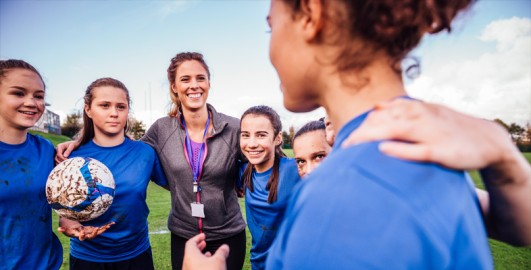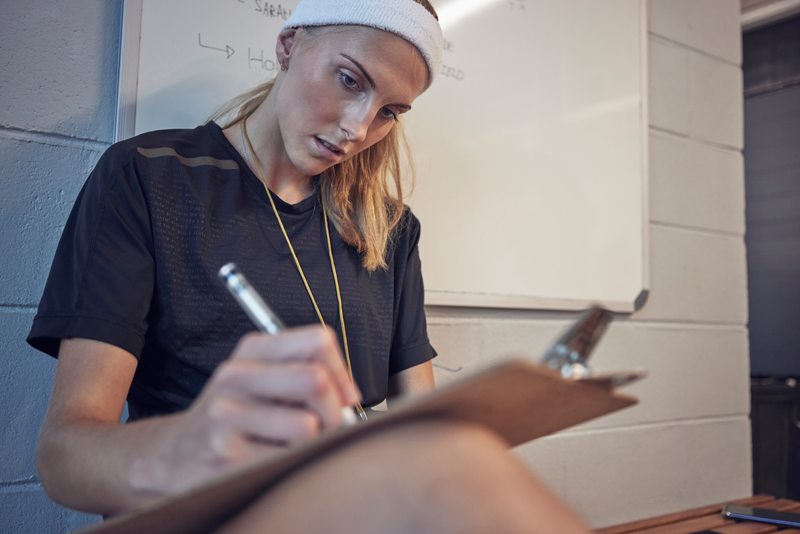1 Professional development
As you have seen throughout this course, research on coaching neurodiverse athletes has highlighted common themes, many of which are yet to be addressed within models of coach education. These themes include the reliance on deficit rather than strength based models when working with athletes (Hoare et al., 2023), the practice of masking and the increased emotional strain this can place on an athlete (Quigley and Gallagher, 2025), and the importance of listening to experiences of wider family members (Billington, 2023).
This means coaches are often learning through experience (Kimber et al., 2023) with trial and error being a common method of discovering ways to support the athletes they are working with (Townsend et al., 2022). This can lead to limitations in the effectiveness of support offered to neurodiverse groups, and decreased confidence among coaches. In the absence of this being covered widely in formal coach education, developing confidence and skills in working with neurodiversity may be more informal in nature. The following activity takes a small case study approach to explore this.
Activity 1 Peer support in coaching
Read the case study information below and then answer the two questions which follow. You may want to read the information a second time to help you consider your answers.
Erin is a coach for a local youth roller hockey team who take part in local and national competitions, and knowing you are a fellow coach has come to you for a bit of advice on how to manage a new situation. The team is mixed gender, and is comprised of 15 and 16 year old players. As the head coach for the team, Erin does the majority of planning and delivery of sessions but is supported by an assistant coach on training and match days.
Family members of two different members of the squad have recently approached Erin to share their children have diagnoses of autism, ADHD and dyslexia. Although she has noticed some players react differently to the drills she uses in training, this is the first time Erin has been prompted to consider neurodiversity in her practice. Her formal coach education sessions have never covered this as a topic before, so she is wondering how she should organise training sessions and match preparations in light of this new information. She has reflected on how her coach education experiences have at times focused on coaching needs of ‘the team’ rather than the needs of individuals, so she is feeling a little lost on what to do next.
Training sessions and matches take place in the same large indoor gymnasium. Training sessions with just squad members in attendance mean the environment has a lot of noise and echoes, which makes it hard for Erin to be heard. It is also well ventilated so can be quite cold. On match days there are fewer echoes as the other team and spectators are in attendance, making it feel like a very different environment. More people also mean it can be a hotter environment for matches and competition than for training sessions.
Focus on the following questions to help you.
- What issues could arise in training or competition days which might impact neurodiverse squad members?
- What could you advise Erin to do in order to feel more prepared to meet the additional needs of these two squad members?
Discussion
You may have identified a number of potential answers based on your learning from the course so far. Some suggestions are discussed below.
- The differences in environment between training and competition could be an issue for all athletes, however this may be heightened for neurodiverse athletes. For example, the presence of echoes during training might make it harder for these players to engage with instructions from Erin. Changes in temperature and the number of people present on match days may also be difficult for these players to manage, potentially leading to them feeling overwhelmed.
- Erin could take an athlete-led approach by asking each player and their parents what they find easy or difficult to manage on training and match days. Erin should be open to the fact both players may have very different experiences and explore what individual adjustments to her practice they would each find helpful. For example, if a player finds match days hard because of the increased numbers of people present in the building, one solution may be to see if they can get on the rink early and let the area fill up gradually around them. Erin could also take a strengths based approach by asking players (and their families) what they enjoy and find useful in these situations, before finding ways to bring that into training drills or match preparation. For example, if a player prefers a high level of detail in their lives, Erin could give more detailed explanations to her drills or share information with the player and their family before a session.
With limited access to any formal training on coaching neurodiverse athletes, there is a risk of unhelpful practices being adopted which may unintentionally create barriers for neurodivergent athletes participating in sport and exercise. Research by Kimber et al. (2023) uncovered views of inclusion which demonstrate this. The following quote from a coach in this research is one example (emphasis added):
I’ve got a passion for inclusion, but only when I feel it is the right inclusion.
While comments such as this may be well-intentioned, they can also demonstrate a misunderstanding of developing inclusive practice, as the basis of this approach is being rooted in what the coach needs, as exemplified by this coach suggesting there is a ‘right’ or ‘wrong’ type of inclusion. For coaching practice to be truly inclusive, practice needs to be based on the needs of the athlete in front of them, therefore negating any need for the ‘right’ inclusion. Townsend et al. (2022) suggest where a coach may feel under resourced and under trained in these issues, there can be a comfort in seeking out rigid categories for athletes with additional needs. While this should be considered unhelpful and counter to developing inclusive practice, it should also be acknowledged as the reality for many working in sport and exercise settings. If we do not acknowledge this then it becomes more difficult to challenge and develop strength-based practices.
Townsend et al. (2022) go further and place the role of the coach as essential in helping any athlete with disability access sport as a human right, providing a regular point of contact via personalised responses and support. However, the potential for this process is severely hindered by a lack of training opportunities, relying instead on individual coaches' experiences and learning through trial and error.
Activity 2 Athlete’s experiences of supportive coaching
Watch the next section of the video below of Lucy Bronze. Here she describes her experiences as an autistic athlete and her relationship with her coaches.
Lucy Bronze opens up about autism and ADHD diagnosis [Tip: hold Ctrl and click a link to open it in a new tab. (Hide tip)] . Watch from 1:16 to the end.
When watching the clip, think about the following questions:
- What things has Lucy found hard in her sporting experiences to date, specifically related to her experiences of autism and ADHD?
- How does Lucy describe some positives about her neurodivergence?
- How do you think coaches could use some of Lucy’s neurodivergence in positive ways?
Discussion
- Lucy’s experiences tell us a lot about how as an autistic athlete she found it hard to communicate with others, often being ‘ten steps ahead’ all the time. Hugging and eye contact were also things she describes as making her feel uncomfortable as well as struggling with sleep. From a neurotypical perspective you may reflect on how these behaviours could be misunderstood. This leads to how Lucy describes her experiences of masking, which you learned about in Week 2, and how she copied her peers to try and fit in.
- Lucy refers to how she now feels her neurodivergence is something which helps her. She describes her approach as having ‘hyperfocus’ and views this as a strength in how she approaches her training and performance. She also refers to how her brain processes things ‘super-quick’, meaning she can think through thought processes very quickly.
- You may have come up with a number of suggestions on how Lucy’s coaches could use her strengths. An example could be using her ability to process information quickly to help teammates think through how tactical adjustments can play out in a match.
The next section will help you think about how to further develop strengths-based approaches in your coaching.

